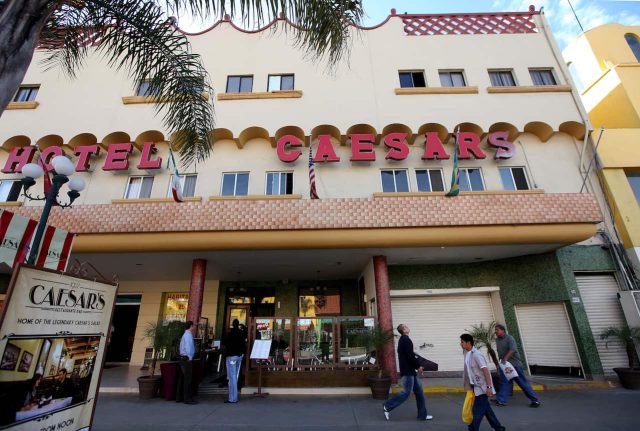Arguably one of the world’s most popular dishes, the caesar salad is celebrating its 100th anniversary, with celebrations underway in its birthplace of Tijuana, Mexico.
Italian immigrant Caesar Cardini is credited with the invention of the dish on 4 July 1924 at his restaurant, Caesar’s.
As prohibition of liquor swept across the United States, the restauranteur’s Mexican location was a popular spot for guests in search of alcohol.
Cardini’s creamy, crunchy invention was the result of an improvisation one evening, performed in the middle of the dining room, to feed the influx of Americans.
Tijuana plans to commemorate the anniversary this month with a three-day food and wine festival and the unveiling of a statue of Cardini.
To this day, the caesar salad’s namesake restaurant still calls Tijuana home. Source: Getty / Sandy Huffaker / Corbis
What is a caesar salad?
Unlike other menu items from the early 20th century, the caesar’s superpower lies in its simplicity, which makes it ripe for constant reinvention.
Cardini’s original recipe was derived from ingredients that he had on hand: garlic-flavoured oil, Worcestershire sauce, lemons, eggs and Parmesan cheese, which were tossed with the blanched leaves of Romaine lettuce.
Nowadays chefs may add chicken, bacon or salmon, mix in kale or brussels sprouts and make the dressing out of miso paste or tofu. Experts say that variations like these are the key to the dish’s longevity.
At Beatrix, a chain of five restaurants in Chicago that makes healthier versions of comfort foods, chef and partner Andrew Ashmore spreads a spoonful of yoghurt-based dressing at the bottom of the salad bowl and mixes it with capers, parsley, lemon vinaigrette and champagne vinegar before adding little gem lettuce, baby arugula, bread crumbs and a generous shaving of grada padano cheese.
“It’s our number one selling salad, and it has been since we opened 11 years ago,” Ashmore said.
“I couldn’t try to take it off the menu if I wanted to.”
Why is the caesar salad so popular?
Beth Forrest, a professor of liberal arts and applied food studies at the Culinary Institute of America, said caesar salad is ideal for the Western palate because it contains two preferred textures: crispy and creamy.
The egg yolks and parmesan cheese are also high in glutamate acids, which give the salad the rich, salty taste known as “umami”.
“It satisfies us in many hedonistic ways, while we can still feel virtuous. It is, after all, a salad,” Forrest said.
To this day, Caesar’s — now a fine dining restaurant opened by Cardini in Tijuana a few years after the salad was born — says it still makes as many as 300 caesar salads each day.





